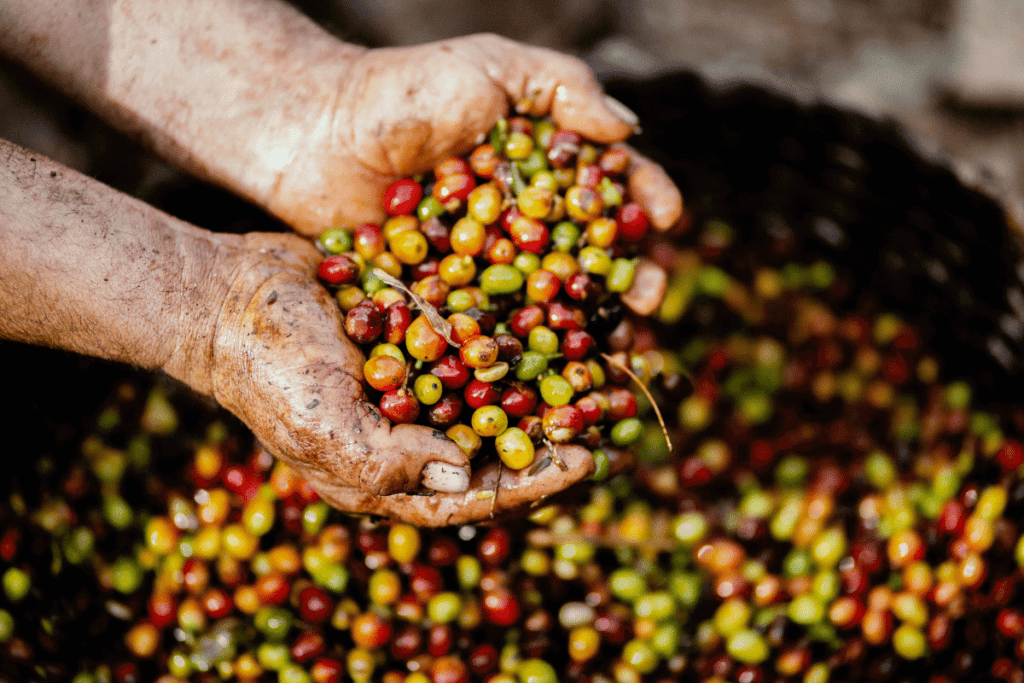
Java lovers, what’s your favorite country to buy your coffee beans from? Chances are, it’s Colombia, and for good reason. Not only does Colombia rank as the 3rd largest coffee producer in the world today (out of the roughly 70 countries), but it has a long history of sustainable coffee farming traditions that got it on UNESCO’s world heritage list. In regular talk, that means it is good for the earth! What makes Colombian coffee so delicious? Read on to learn more about Colombian coffee production, tips on coffee tasting and how to be a conscious consumer the next time you’re looking for a bag of the good stuff.
What’s the Secret to Colombian Coffee Production?
Colombian coffee production took off in the seventeenth century when Jesuit priests brought it over from Spain, but it didn’t enter the global market until the mid-eighteenth century. Today, the industry accounts for over 15% of the nation’s agricultural gross domestic product (GDP), providing jobs to over 500,000 people in the country. So, what makes Colombian coffee especially delicious?
Secret 1: High Altitudes
This South American country is blessed with high altitudes. These lofty heights allow coffee beans to develop slower, which means more nutrients to the bean and—in turn—a more flavorful coffee.
The highest-quality coffee produced in Colombia is said to grow in the Zona Cafetera, with the best premium coffee growing at altitudes of 5,000 feet!
Secret 2: Shade-Grown
Colombia really does have the perfect climate for coffee. Their year-round temperatures are ideal for this crop, which thrives at around 70 degrees. Nevertheless, all that sunlight can damage coffee beans, so the technique is important. This is why 95% of Colombian coffee is shade-grown. This not only avoids sun damage but also allows the beans to grow slowly and develop more complex flavors with time (and in higher concentrations!).
Secret 3: It’s All About Process
Climate is key, but how coffee beans are processed matters, too. Colombian coffee production tends to use wet processing, where the fresh-picked beans are washed with sophisticated machinery before going through the drying process. Unlike the more traditional dry processing method, where the beans are simply laid out to dry after picking, wet processing allows the natural flavors of the beans to shine through.
Secret 4: Did We Mention Volcanoes?
Volcanoes make great coffee! That’s because volcanic soil contains tons of nutrients that enhance coffee plant development. And with fourteen amazing volcanoes in one country, there are lots of nutrients to go around! Volcanic soil is just one of the many “microclimates” within Colombian borders, and each produces its own unique flavor profile.
Speaking of flavor profiles…what can you expect from a cup of Colombian coffee? Colombian coffee is known for producing coffee that has floral hints and notes of tropical fruit. Yum!
Secret 5: Smaller Really Is Better!
As we mentioned earlier, Colombia is on UNESCO’s world heritage list because of its sustainable coffee production practices. The vast majority of Colombian coffee production takes place on small, family-owned farms.
Now, For the Fun Part: Coffee Tasting!
When in Colombia, a cup with the locals is a must! Hit the really local spots with us on our next Yoga Adventure to Colombia. We always shoot for the really small farms for the most authentic experiences. Most coffee farms offer tastings as part of their tours. And if you’re new to coffee tasting, don’t fret—it’s just as easy (and energizing!) as it sounds. Here are some coffee qualities to pay attention to on your next tasting. (And remember: there’s no wrong answer!)
Sweetness
Given the prevalence of mochas and frappuccinos nowadays, most people don’t realize that black coffee carries its own subtle sweetness. Really try to hone in on it as you sample the virgin brew fresh off the farm. Does the sweetness carry a certain flavor? (Maple? Honey?) See if you can taste it.
Body
When we say Colombian coffee is known for its “light body,” what does that mean? “Body” has to do with the weight of the coffee in your mouth. All you beer aficionados out there know that pilsners and stouts carry different weights on your tongue, and coffee is the same way. How does it sit in your mouth?
Acidity
Coffee is known for its acidity, also referred to as “brightness.” Acidity is not always a pleasant sensation, and this is why coffee can sometimes give people heartburn or upset their stomachs. Colombian coffee—especially the varieties grown at higher altitudes—are known for more acidity. As you’re tasting it, think of other well-known acidic foods, like lemons or even yogurt. How does the acidity level compare?
Flavor
Flavor is all about creativity. The key is having a “library” of flavor references to choose from. How does the coffee compare to the chocolate you’ve tasted? Your favorite French wines? How about the papaya you just had for breakfast? Let your imagination run wild!
Finish
Finish is how your mouth tastes and feels after you’ve swallowed your sip of deliciousness. Does anything linger in your mouth? Does it leave a dry feeling? Maybe it coats your tongue in a way you don’t enjoy?
Consuming Consciously: It’s All In the Roaster
Finally, as the ultimate wellness travel company, it’s important to balance good with truth and address the equity (or inequity) in the industry.
There’s no sugarcoating it: the coffee industry is an incredibly unjust one. Coffee farmers—i.e. the ones putting in the most work—only receive 5-10% of the money generated by their crop. As consumers, it’s important to do our homework before buying. Here are three things to keep in mind the next time you’re about to buy a pound of your favorite stimulant:
1. Transparency
Only buy from roasters who indicate clearly (either on their website or on the bag of coffee itself) full information about beans. At a minimum, you should be able to find out the coffee’s origin, region, farmer or co-op, and which import company the roaster worked with to get the coffee.
Consistency Is Key
It’s easy for a roaster to buy one small lot and advertise it while still buying cheaper coffees on the side. Your roaster should be consistently talking about how they buy their coffees and what impact they are having on that farm or co-op.
2. Longevity
Look for roasters who work with the same producers harvest after harvest. This provides more stability to the industry, as this usually means the roaster is committing to its volume during the harvest rather than at the end.
3. Engagement
Roasters carry a lot of influence in this industry, but not as much as the consumer. Look for roasters who are going above and beyond to engage with their growers. This could look like paying higher than the asking price or helping raise money for needed facilities at the farm.
Get Your Coffee Buzz With The Travel Yogi
Is your mouth watering yet? Turn that dream into a reality when you join us on our Colombian Adventure. You’ll enjoy not only coffee tastings, but horseback riding, wildlife sightings, and immersion in the local community. Experience one of Latin America’s most beautiful cities, as well as a coffee plantation. Vamos a Colombia!

